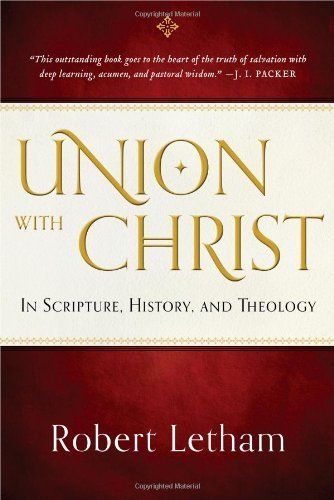I started Letham’s Union with Christ yesterday in hopes to be able to participate in Matt’s book group in Tucson via video stream this evening. So far I have been nothing but impressed with everything I’ve read of Letham’s. This book has been no exception.
According to Paul in Romans 5:12–21, just as Adam plunged the whole race into sin and death because of their relationship of solidarity with him, so the second Adam brings life and righteousness to all who sustain a relationship of solidarity with him.
If all have sinned because of their relationship to Adam, then why aren’t all redeemed by Christ? This is the claim of the Universalists. But all men are related to Adam by birth, not all men are related to Christ by birth. The Universalist wrongly believes that all humans have that same union as with Adam.
Our justification is therefore grounded on union with Christ.
Faith is what unites us to Christ. It is what bring us into relation with him as we were once in biological relation to Adam. It is by our union with Christ that his righteousness is identified as our own. Therefore, as Letham says, we are justified because we are united with Christ.
Union with Christ rests on the basis of the creation of man to be compatible with God. This is at the heart of the message of the first chapter of Genesis, which highlights the creation of man as male and female, and his rule over the created order. So as to see how this relates to our great theme, we will look first at the overall context of the chapter. In summary, it points to God the Creator as a relational being, with man made in his image reflecting this characteristic in himself.
Our union with Christ reveals something about us and something about God. It reveals that our identity, our person, is to be found in Christ. Because we were created in the image of God. And God is relational. The trinitarian God is inherently and eternally relational. This illuminates what being created in the image of God really means and is such a sharp contrast to some of the rather shallow alternatives to what being created in the image of God means that have been proposed throughout the millennia.
Rowland Stedman wrote that the way in which Christ and his people are united is that “the Lord Christ, by his Spirit, taketh possession of them, and dwelleth in them; and Believers through faith of the operation of the Spirit, take hold of Christ, and get into him; and so they are knit together and become one.” The Lord Jesus “cometh and taketh up residence in them; and they are inabled to go forth unto Christ, and receive him as he is offered in the Gospel; whereby they are in him: and thus this Union is established.”123 According to Stedman, there are “two great bonds or ligaments” of this union. On Christ’s part, he dwells in believers by his Spirit. On their part, they apprehend Christ by faith and “take him home, as it were, unto themselves.”124 The first is what Stedman calls a natural bond, while the second he terms a legal bond. The natural bond is the same as the positive element of regeneration. It is total, Christ taking possession of the whole person. It is beyond human power to effect this, although we are required to attend the means of grace for it to happen.125 By this “our natures are fashioned according to his nature,” since there is “a suitableness” between Christ’s human nature and that of a person being sanctified.126 We will explore the ramifications of this in the next two chapters. In legal terms, the union is akin to that of a debtor and a surety, for “the law reckoneth them as one.” The payment made by the surety is accounted as if the debtor had paid it himself because of the oneness that exists between them in the eyes of the law.127 We will discuss this aspect in detail in chapter 4. Stedman further points to what he calls a moral union, of which love is the bond, as in the case of intimate friends. In this sense, “so are the Lord Jesus and his peculiar people knit together.” He dwells in them and they, in turn, hunger and thirst after further enjoyment of him.128 There may be a hint here of the emergence of the dangers of a separation between the imputational and transformative to which Evans points.129
Two bonds in the union with Christ. 1) Natural. This is the same as regeneration. Christ is taking possession of our whole being. It is beyond human power to effect this. The second bond is the legal bond. Where we are bonded to Christ in debt.
It’s this legal bond of union that Keller seemed to emphasize in his sermon on the union of Christ.

